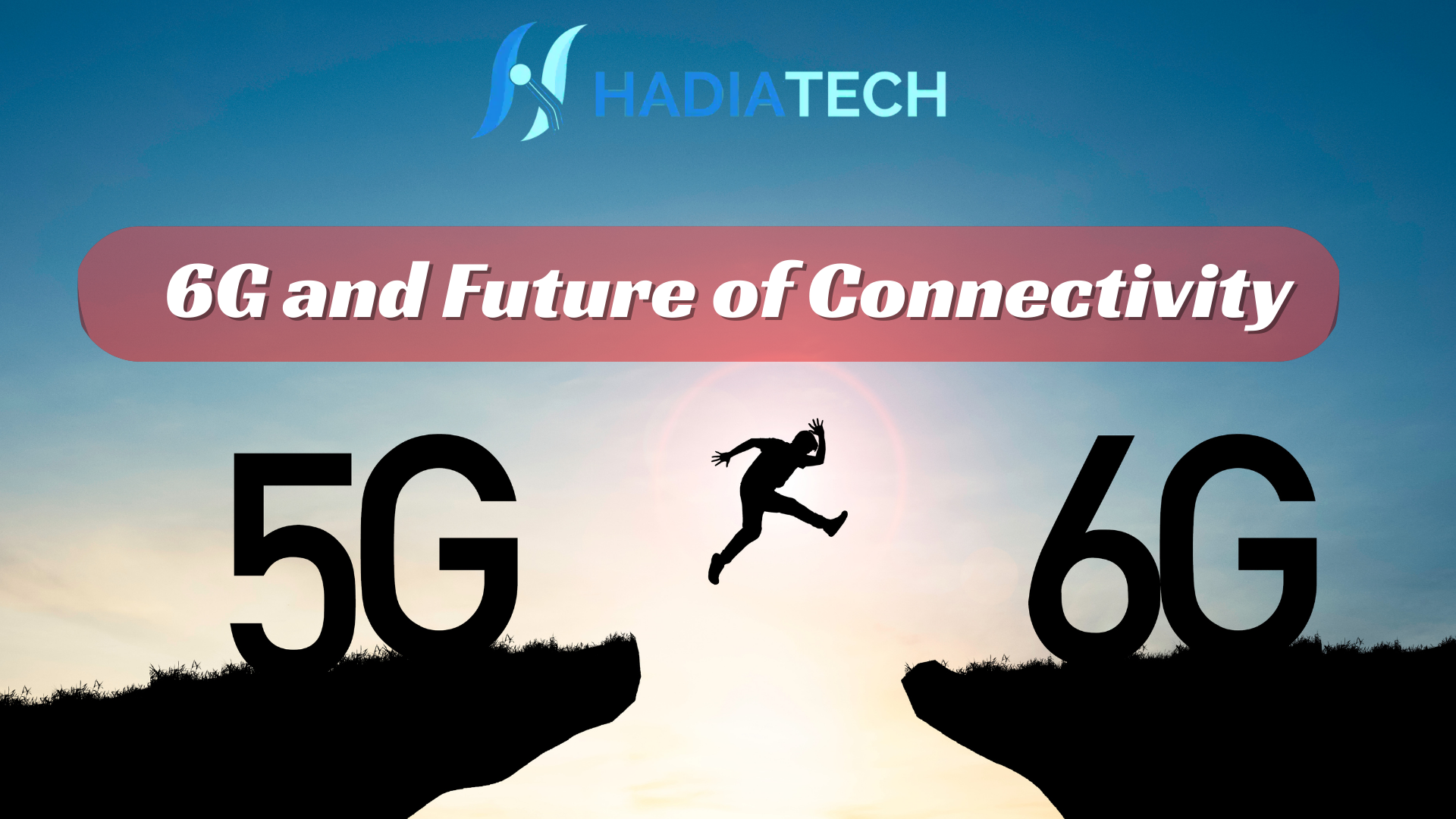6G and the Future of Connectivity: Why You Should Actually Care
Okay, so you’ve just about gotten used to 5G, right? That whole hype train with promises of lightning-fast downloads, no lag when gaming, and streaming in 4K while sitting on a bus? And now, out of nowhere, people are already talking about 6G?
Yeah. I get it. It sounds ridiculous. Like, can we just enjoy the current tech without companies throwing the next big thing in our face?
But here’s the thing — 6G isn’t just a slightly faster version of 5G. It’s shaping up to be something much bigger. We’re talking about a whole new way we connect to the world, to each other, and to pretty much everything else with a chip in it. And as futuristic as it sounds, the groundwork is already being laid. So before you roll your eyes and scroll past it, hear me out.

First, What Even Is 6G?
Alright, so let’s start at square one. What is 6G?
On paper, 6G is the sixth generation of wireless technology — the thing that will replace 5G in the next 8-10 years (though early versions might start creeping in by 2030). It’s expected to be 100 times faster than 5G. Yeah, not a typo — 100 times.
But speed isn’t the only thing that changes. With 6G, we’re looking at near-instant communication, real-time augmented reality, holograms that actually work, and smart devices that basically think for themselves.
Sounds like sci-fi, right? But that’s genuinely where this is headed.
Also Read: Next-Gen Gadgets & Devices You’ll Want in 2025
Okay Cool, But Why Should I Care?
Fair question. Here’s why this should be on your radar — especially if you’re part of Gen Z, or even on the edge of it.
You’re growing up in a world where your entire life is online — your job, your friends, your entertainment, your education, your shopping, even your doctor’s appointments. And guess what? All of that depends on networks.
So imagine what happens when those networks become basically invisible. No buffering, no lag, no “can you hear me?” Zoom calls. Just real-time, seamless everything.
That means:
-
Remote work actually feels remote, not frustrating.
-
Your AR glasses (which might replace your phone) can guide you through a city you’ve never been to.
-
Your doctor could check your vitals through a wearable in real-time.
-
You could attend a concert virtually and it actually feels like you’re there — not just watching a live stream with a shaky camera.
6G could make all of this not just possible, but normal. And that changes a lot about how we live.

Let’s Talk Real-Life Stuff — Like Jobs, Money, and the Grind
Now if we’re keeping it 100, most of us don’t care about tech unless it affects our wallets, careers, or day-to-day life.
So here’s where 6G gets even more interesting.
1. The Job Market’s Going to Shift — Again
Every time there’s a big tech jump (like from 3G to 4G or 4G to 5G), it creates entirely new industries. Think about it: Uber, TikTok, remote jobs, even food delivery apps — they only exist because the network speeds got fast enough.
With 6G, we’re looking at:
-
Entire industries being built around AR/VR (not just for gaming, but work, education, design, and events).
-
A boom in AI-driven services that run in real-time.
-
Demand for people who understand how to build, manage, and secure this tech.
So if you’re job-hunting in the next decade (which, let’s be real, most of us will be), you might end up working in a field that literally doesn’t exist yet — one that’s only possible because of 6G.
Also Read: Using AI Chatbots on Your WordPress Site to Boost Sales in 2025
2. Money Moves Differently When Tech Evolves
You know how investing in crypto, NFTs, and digital real estate was the trend for a hot minute? That kind of hype doesn’t die, it just morphs into whatever the next big infrastructure is.
6G could make digital assets, smart contracts, and virtual economies feel way more real — because interacting with them will be smoother, more immersive, and more secure. We’re talking about:
-
Virtual shopping that feels like an actual mall visit
-
Renting virtual space for events, meetups, or businesses
-
AI-powered assistants doing micro-tasks on your behalf in real time
It might sound like something out of Ready Player One, but this isn’t fantasy. It’s just the next layer of the internet, and 6G is the tool that’ll make it work.
But Wait, Is This Going to Be Creepy?
Honestly? A little bit.
With all this connection comes a ton of data. Your devices, your habits, even your health info — all pinging back and forth between networks and systems. That’s a privacy minefield.
And 6G? It’s not just about phones anymore. We’re talking about everything being connected — your car, your fridge, your clothes, even the freaking sidewalk. This concept is called the Internet of Everything (IoE).
So yeah, if the idea of your toaster knowing your daily routine weirds you out, you’re not alone. The trade-off here is between convenience and control. And that’s a battle we’re already fighting (looking at you, personalized ads).
It’ll be up to us — and to be honest, to lawmakers and watchdogs — to make sure this future stays cool and doesn’t go full dystopia.
The Real-World Glimpses Are Already Here
If you’re thinking, “Okay, this all sounds really far off,” here’s the wild part — early testing is already happening.
Countries like South Korea, Japan, the U.S., and Finland are already throwing serious money into 6G R&D. Companies like Samsung, Huawei, and Nokia are testing new spectrum bands that could carry these ultra-fast signals.
There are even early predictions that 6G could enable brain-computer interfaces — like, actually thinking a command instead of typing or speaking it.
No joke. It’s weird and wild and kind of amazing.
So What Should You Do With This Info?
Here’s the deal: You don’t need to go build a 6G tower or start coding AR apps tomorrow. But being aware of where things are headed? That’s smart.
Because if you’re a student, a job hunter, a side hustler, or just someone who wants to stay ahead of the curve — this stuff will affect you. And the sooner you understand what’s coming, the better you can:
-
Position yourself for jobs that actually pay in the next 10 years
-
Spot opportunities in tech before they hit the mainstream
-
Avoid getting blindsided by privacy changes or digital policy shifts
Think of it like this: 6G is going to be the stage. And everything we care about — music, education, healthcare, dating, money — will be the performance.
Final Thought: It’s Not Just Faster Internet. It’s a Whole New World.
At the end of the day, 6G isn’t just about speed. It’s about possibility. It’s about creating a world where tech actually blends into our lives so seamlessly, we stop noticing it. It just works.
But — and this is key — it’s up to us to make sure that world is inclusive, ethical, and built with actual people in mind. Not just profit margins and shiny toys.
So yeah. It might feel early. But trust me — this actually affects you.
And when that moment comes where you slip on AR glasses and attend a meeting in another country without leaving your couch… just remember: 6G’s the thing that made it possible.
Let’s just hope the coffee still tastes real.
FAQs
What is the role of 6G networks in future connectivity?
6G networks will serve as the backbone for a hyper-connected world, going far beyond just faster internet. While 5G gave us low-latency connections and high-speed downloads, 6G is expected to bring real-time responsiveness, true immersive experiences, and instant global communication. Think remote surgeries performed across continents, AI-powered smart cities that manage themselves, or virtual reality meetings that feel almost like being physically present.
6G will support technologies like AI, edge computing, holographic displays, and ultra-precise location services, all of which demand network speeds, bandwidth, and responsiveness that 5G just can’t provide. The role of 6G is to turn today’s digital dreams into everyday realities — not just for our phones, but for everything around us: cars, wearables, homes, even infrastructure.
Will there be a 7G network?
In theory, yes — but it’s too early to say exactly what 7G will look like. The evolution of mobile networks follows a roughly 10-year cycle, and each generation solves limitations of the previous one while introducing new capabilities. If and when 6G becomes mainstream (likely in the 2030s), the conversation around 7G will start to take shape.
What’s likely is that 7G could involve deep integration of human cognition with machines, global AI-powered infrastructure, or networking on a planetary or interplanetary scale (seriously, space-based networks are already being discussed). So while 7G isn’t here yet, it’s safe to say that innovation won’t stop at 6G.
How can we shape the future of mobile connectivity with 6G?
Shaping the future of 6G is a collective effort involving not just engineers and governments, but also everyday users, developers, and businesses. It starts with building responsibly — making sure privacy, ethics, and accessibility are part of the design from day one. That means developing security systems that evolve alongside the technology, making sure rural and underserved communities aren’t left behind, and ensuring the infrastructure is energy-efficient and sustainable.
There’s also a huge opportunity to influence how 6G is used. By supporting open platforms, creating inclusive tech solutions, and advocating for fair access, we can steer 6G away from being just another tool for big corporations and toward something that genuinely improves people’s lives. Developers and creators can start experimenting with immersive applications, spatial computing, and edge AI right now to help guide the direction this tech takes.
How will 6G change the world?
6G will change the world by merging the digital and physical realms in ways we’ve only seen in science fiction. It’s not just an upgrade — it’s a full transformation of how we connect, communicate, and experience reality.
With 6G, virtual and augmented reality won’t be clunky or niche — they’ll be everyday tools. Imagine learning history by walking through an interactive digital recreation of ancient Rome, attending concerts through holograms, or having your smart city reroute traffic in real-time to make your commute smoother. Healthcare, education, transportation, entertainment, and even personal relationships could all be redefined by ultra-fast, ultra-responsive connectivity.
In short, 6G will help create a world where technology adapts to us, not the other way around — a world that’s faster, smarter, more immersive, and more connected than anything we’ve seen so far.




